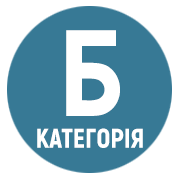ПОРІВНЯЛЬНИЙ АНАЛІЗ ОСОБЛИВОСТЕЙ ПСИХОСОЦІАЛЬНИХ ІНТЕРВЕНЦІЙ В ХОДІ ПСИХОЛОГІЧНОЇ ДОПОМОГИ ДІТЯМ-ВПО, ЯКІ ПОСТРАЖДАЛИ ВНАСЛІДОК ВІЙНИ
DOI:
https://doi.org/10.32782/psy-visnyk/2025.1.11Ключові слова:
психологічна допомога ВПО, психосоціальні інтервенції, діти, постраждалі від війни, психологічні наслідки війниАнотація
В статті здійснено огляд та аналіз психосоціальних інтервенцій в межах різних програм психологічної допомоги, які застосовуються в кризових умовах для внутрішньо переміщених дітей. Проаналізовано та виокремлено особливості, цілі та зміст таких інтервенцій в Боснії для дітей та їхніх опікунів-ВПО, в психологічному центрі в м. Тузла; в Палестині для дітей-ВПО, а також, здійснено порівняння актуальних даних, які зібрані в Україні, стосовно змісту інтервенцій, наданих на базі дружніх до дітей просторів, починаючи з березня 2022 року. За визначеними критеріями (назва, зміст інтервенцій, тривалість програм, кількість учасників, ціль та мета їх застосування, характер, залученість інших видів послуг, результати) здійснено порівняння різних видів психосоціальних інтервенцій, які застосовуються стосовно внутрішньо переміщених дітей, постраждалих від війни. Застосовано теоретико-методологічний аналіз, аналіз результатів ефективності психосоціальних інтервенцій, порівняльний аналіз. За допомогою цих методів проведений аналіз та здійснені висновки про результативність інтервенцій, яких не було достатньо для впливу на складні та глибокі порушення, і які не призвели до статистично значущих змін. Решта даних, зокрема зібраних в Україні, потребують ретельного та детального аналізу та опису змісту інтервенцій, з використанням даних показників тестування та вимірювань результатів. Результати виявили величезні прогалини в описі змісту інтервенцій, доцільності їх надання, опираючись на науково доведені факти результативності, а також враховуючи недостатні дані стосовно впливу на дітей психотравмуючих подій і розбіжності стосовно цього. Сформульовані рекомендації стосуються необхідності застосування комплексних та мобільних новітніх підходів, особливо в умовах триваючих кризових подій чи військових конфліктів.
Посилання
Борщ, К. К. Особливості прояву стресу серед дітей в умовах війни. Науковий вісник Ужгородського національного університету. Серія: Психологія (1), 2023 . С. 47-51.
Керівництво Міжвідомчого постійного комітету з психічного здоров’я та психосоціальної підтримки в умовах надзвичайної ситуації, 2007 р. Женева. 103 с.
Міжнародна організація з міграції. Україна. Психічне здоров’я в Україні: переміщення, уразливість та підтримка – тематичний нарис (листопад 2024 року). IOM, 2024. 8 с.
Підчасов Є.В, Чепелєва. Н.І Стресові стани дитини під час війни. Особистість, суспільство, війна : тези доп. учасників міжнар. психол. форуму (м. Харків, 15 квіт. 2022 р.). Харків: ХНУВС, 2022. С. 93-95
Проблеми українських дітей під час війни (27 січня – 1 лютого 2023) : Соціологічна група «Рейтинг», 2023. URL: https://ratinggroup.ua/research/ukraine/problems_of_ukrainian_children_in_conditions_of_war_january_27february_1_2023.html?fbclid=IwAR1RzWGoelpkqiQCozKY5KSYluHf2_UX9G4oQn05D1Kme FcyjNeC24GcbfA
Психологічна підтримка та допомога дітям, які пережили травматичні події. Навчально-методичний посібник. Автори-упоряд. : Н. Вааранен-Валконен, Н. Заварова, за заг. ред. О. Калашник. К., 2022. 104 с.
Уесселз, М. Дж. Діти та збройний конфлікт: Втручання для підтримки дітей, постраждалих від війни. Мир і конфлікт: Журнал психології миру, 2017. 23(1). С. 1-4.
ЮНІСЕФ. «Спільно» – програма гуманітарної підтримки сімей з дітьми в Україні, 2023. https://www.unicef.org/ukraine/spilno-social-support
Dybdahl. R. and all. Children and mother in war: an outcome study of psychosocial interventions. Child Development, Volume 72, Number 4, July/August 2001. P.1214–1230.
Dyregrov, A., Gupta, L., Gjestad, R., & Mukanoheli, E. Trauma exposure and psychological reactions to genocide among Rwandan children. Journal of Traumatic Stress, 13, 2000. P. 3–21.
Kangaslampi S., Punamaki R.-L., Qouta S., Diab M., Peltonen K. Psychosocial Group Intervention Among War-Affected Children: An Analysis of Changes in Posttraumatic Cognitions. Journal of Traumatic Stress. 2016. P. 1–10.
Miller, K. The effects of state terrorism and exile on the indigenous Guatemalan refugee children: A mental health assessment and an analysis of children’s narratives. Child Development, 67, 1996. P. 89–106.
Office of the United Nations High Commissioner for Refugees, operational data portal, Ukraine Refugee Situation. https://data.unhcr.org/en/situations/ukraine
Rutter, M. Stress, coping and development: Some issues and some questions. In N Garmezy & M. Rutter (Eds.), Stress, coping and development in children New York: McGraw-Hill, 1983. P. 1–41.
Ukraine. Humanitarian needs and response plan. Humanitarian programme cycle 2025 January 2025, OCHA. 100 p.
UNICEF. Ukraine Humanitarian Situation Report No. 45, 2004. 8 p.






